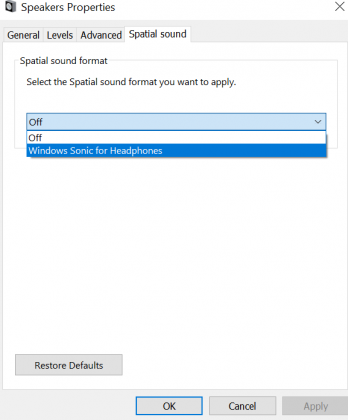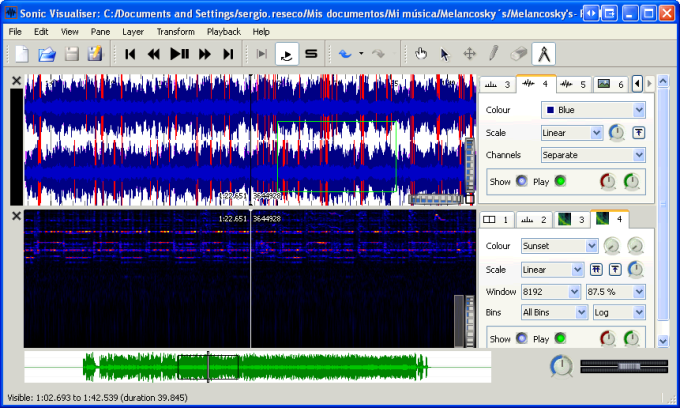

- SONIC VISUALISER CANNOT SEE WORDS ON BOTTOM LICENSE
- SONIC VISUALISER CANNOT SEE WORDS ON BOTTOM SERIES
- SONIC VISUALISER CANNOT SEE WORDS ON BOTTOM FREE
These properties might be confusing for nontechnical users but are adequately explained in the documentation.
SONIC VISUALISER CANNOT SEE WORDS ON BOTTOM SERIES
The spectrogram is calculated by segmenting the audio file into windows and performing a series of fast Fourier transforms to obtain the frequency components present in the audio stream, and the overlap refers to the number of overlapped samples between windows. The editable properties include color schemes for all types of layers, and for spectrogram layers users can change window and overlap sizes. The user navigates the layers by clicking on labeled tabs at the top of the Display Properties box. 6 The unique extended documentation gives the SV user much more than an overview of features-it provides an entire theoretical framework from which to draw research questions and methods.Įach layer type has its set of display properties, which can be altered in the panel that shows up on the right side of the window when a new layer is created.
SONIC VISUALISER CANNOT SEE WORDS ON BOTTOM FREE
4 The tutorial “A Musicologist’s Guide to Sonic Visualiser” is particularly instructive for new users, 5 as is Leech-Wilkinson’s free online book The Changing Sound of Music. The material is extensive, especially if one begins to explore the resources listed on the documentation page, which leads to the CHARM website. The SV website provides excellent background information, videos, tutorials, and links to past and current projects. SV is a tool for exploring sound, and for extracting and analyzing music’s multidimensional features. This is a fact that often disappoints and confuses new users.

In fact, once you record something it is impossible to edit the audio. Recording is possible, although this is not SV’s primary purpose. As you scroll through one pane, the other panes move accordingly (at different speeds depending on their zoom levels) to remain aligned at the centre.So, what is SV exactly? It is many things, but perhaps most of all, it is not a DAW (digital audio workstation), at least not in the traditional sense. The three panes in this window are at quite different zoom levels the green overview at the bottom shows three rectangles corresponding to the regions shown in each of the three panes above. Sonic Visualiser 0.9 showing a waveform, beat locations detected by a Vamp plugin, an onset likelihood curve, a spectrogram with instantaneous frequency estimates and a "harmonic cursor" showing the relative locations of higher harmonics of a frequency, a waveform mapped to dB scale, and an amplitude measure shown using a colour shading. Here we see a log-frequency spectrogram and a waveform of part of Bob Dylan's "Don't Think Twice, It's All Right".

The Russian translation is included in the standard program and should be used automatically if your locale is set appropriately. Sonic Visualiser 1.0 in Russian – translation thanks to the hard work of Alexandre Prokoudine. The spectrogram pane below it shows estimated instantaneous frequencies for peak FFT bins. The waveform pane at the top is overlaid with a spectral centroid calculation (the coloured shading), the outputs of two note onset detection Vamp plugins (red and black vertical lines – neither of them seems to work very well on this sort of music) and the onset likelihood function from a third onset detection plugin (the blue curve). (In fact the whole final movement is loaded and may be scrolled through – see the green overview at the bottom of the window.) Sonic Visualiser 1.0 showing about a minute of the final movement of Mahler's 9th symphony, performed by the Czech Philharmonic under Vaclav Neumann. The notes from the tracker are played using a piano sample, configured in the plugin dialog visible. Overlaid on the spectrogram is a note layer, showing the output of a note-tracker Vamp plugin that is being evaluated. (The music is "After the Pain" by Carlos Pino.) Sonic Visualiser 1.0 showing a waveform pane and a melodic range spectrogram pane. Sonic Visualiser 3.0, running on Windows, showing a waveform, a melodic range spectrogram, and a key analysis carried out by a Vamp plugin. It was developed at the Centre for Digital Music at Queen Mary, University of London.
SONIC VISUALISER CANNOT SEE WORDS ON BOTTOM LICENSE
Sonic Visualiser is Free Software, distributed under the GNU General Public License (v2 or later) and available for Linux, OS/X, and Windows. We hope Sonic Visualiser will be of particular interest to musicologists, archivists, signal-processing researchers and anyone else looking for a friendly way to take a look at what lies inside the audio file. The aim of Sonic Visualiser is to be the first program you reach for when want to study a musical recording rather than simply listen to it. Sonic Visualiser is an application for viewing and analysing the contents of music audio files.


 0 kommentar(er)
0 kommentar(er)
